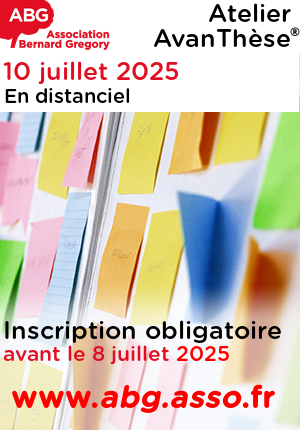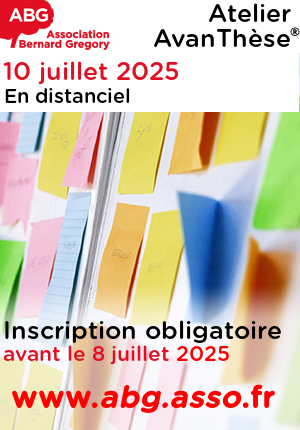Impact of Operating Conditions and Utilization Profiles on Solid Oxide Electrolysis Stacks Lifetime
| ABG-131749 | Sujet de Thèse | |
| 07/05/2025 | Contrat doctoral |
- Energie
- Ecologie, environnement
- Matériaux
Description du sujet
Context
The shift to a low-carbon European Union (EU) economy raises the challenges of integrating renewable energy sources (RES) and cutting the CO2 emissions of energy intensive industries (EII). In this context, hydrogen produced from RES will contribute to decarbonize those industries, as feedstock/fuel/energy storage. According to the pipeline of hydrogen production projects, the annual production of low-emission hydrogen could reach more than 24 Mt H2 by 2030 [1]. With its RePowerEU plan (affordable, secure and sustainable energy for Europe) [2], Europe will account for a large portion of this capacity, with a renewable H2 target set to 10 million tons of annual domestic production (~ 100 MW), and an additional 10 million annual tons of imported H2.
Among the different technologies for low carbon H2 production, High temperature electrolysis (HTE) enables the production of green Hydrogen with extremely high efficiency. Indeed, HTE carries promises of system efficiency greater than 90%LHV, a 20% boost compared to Alkaline or PEM electrolyzes particularly relevant in the current context of high electricity prices [3]. The solid oxide cells (SOC) are typically operated in the 650-to-850°C temperature range, and arranged in pile-ups or stacks to increase the overall power density and address (pre-) industrial markets.
The technology has recently entered a phase of aggressive industrialization. However, significant efforts are still required to turn the high efficiencies into a competitive levelized cost of H2 (LCOH). As long as such cost remains largely controlled by that of stack manufacturing, stack degradation and the relationship with operating conditions remain a crucial subject of research and development. Moreover, as demonstration systems get bigger, predicting future stack performance will be paramount to optimizing operation within realistic constraints (e.g. fluctuating power availability and price). Unfortunately, predictive models will be needed significantly before detailed studies of each individual degradation mechanisms can be combined into a global response.
Recent advances have shown that to properly evaluate stack lifetimes, actual testing beyond 5 kh is critical. Indeed, the main driver(s) for degradation may change overtime, complicating any attempts at extrapolation [4,5]. However, to reach extreme test durations, infrastructure and utility networks must be robust and resilient. As a consequence, while the ideal test duration has slowly grown in recent years for 1 to 10 kh, no actual full stack test in electrolysis mode beyond 10 kh has been reported [6–8]. Conversely, several by CEA to reach that milestone have end by the stacks destruction due to failures of utility networks. To make matter worse, the quality of feed networks over time (DI water, H2, N2) can affect the stack response, just as potential emergency shutdowns [8]. In turn, it makes comparing results obtained on different equipment at different time tricky. Consequently, reaching extreme durations with a technology fragile to failures underlines the useful and high industrial and scientific value for accelerated stress tests (AST). Indeed, in theory, AST can shorten test durations and accelerate technology development without compromising the conclusions drawn.
Subject summary
The main objective of this work is the development of a degradation model at stack level, elaborated based on multiple long term durability tests, with a detailed analysis of primarily electrical, electrochemical (obtained through Electrochemical Impedance Spectroscopy EIS), as well as fluidic and thermal behaviors, along with physico-chemical properties (derived from post-mortem analyses). To increase the volume of comparative test data produced, CEA has built a brand-new type of testing equipment, well beyond the state-of-the-art, that will be dedicated to this project. It comprises 4 individual stack test stations, packaged in a maritime container, to be operated simultaneously in parallel and in different conditions over 10 kh. This should allow direct comparison
(provided performances are periodically assessed at reference temperature [5,9,10]) and identifying the contributions of individual operating parameters.
This project will combine experimental work (long term test data, EIS data, and (FIB-)SEM/XRD postmortem data of aged samples) to modeling tools (mainly by associating experimental data with equivalent electrical circuits to interpret the underlying physical phenomena, but also by developing degradation laws of individual mechanisms) to produce a representative degradation model. Exploitation of the model should allow both AST development (maximization of degradation), and identification of optimized operating conditions (minimization of degradation).
The successful candidate will be interacting with multiple satellite PhD projects that will exploit some of the data generated in this work. As a result, high visibility and a significant number of publications and participations in conferences are expected.
Management Team
Thesis supervisor: Sébastien Rosini (CEA, Liten, Grenoble)
Co-supervisors: Jérôme Aicart & Marie Petitjean (CEA, Liten, Grenoble)
Bibliography
[1] Global Hydrogen Review 2022, International Energy Agency, 2022.
[2] REPowerEU Plan, European Commission, 2022.
[3] Strategic Research and Innovation Agenda, Hydrogen Europe, 2020.
[4] J. Aicart, A. Surrey, L. Champelovier, K. Henault, C. Geipel, O. Posdziech, J. Mougin, in 15th European SOFC & SOE Forum, Lucerne, Switzerland, 2022, pp. 138–149.
[5] J. Aicart, A. Surrey, L. Champelovier, K. Henault, C. Geipel, O. Posdziech, J. Mougin, Fuel Cells 2023, 23, 463–473.
[6] G. Corre, A. Brisse, ECS Transactions 2015, 68, 3481–3490.
[7] J. Aicart, L. Tallobre, A. Surrey, D. Reynaud, J. Mougin, in 15th European SOFC & SOE Forum, Lucerne, Switzerland, 2022, pp. 151–162.
[8] J. Aicart, L. Tallobre, A. Surrey, B. Gervasoni, C. Geipel, H. Fontaine, S. Desousanobre, J. Mougin, International Journal of Hydrogen Energy 2024, 60, 531–539.
[9] M. Hubert, J. Laurencin, P. Cloetens, B. Morel, D. Montinaro, F. Lefebvre-Joud, Journal of Power Sources 2018, 397, 240–251.
[10] F. Monaco, D. Ferreira-Sanchez, M. Hubert, B. Morel, D. Montinaro, D. Grolimund, J. Laurencin, International Journal of Hydrogen Energy 2021, 46, 31533–31549.
Nature du financement
Précisions sur le financement
Présentation établissement et labo d'accueil
CEA-Liten - Plateforme Production Hydrogène et Stockage
https://liten.cea.fr/cea-tech/liten/Pages/Collaborer/Plateformes-Technologiques/Production-Hydrogene-et-Stockage.aspx
Profil du candidat
Skills required
- Good academic knowledge of electrochemistry & thermodynamics
- Knowledge of EIS and SEM is appreciated
- Resourceful, autonomous
- Ability to work in team.
- Ability to generate new ideas and propose new solutions/concepts
- English (fluent)
- Written and oral communication skills.
Vous avez déjà un compte ?
Nouvel utilisateur ?
Vous souhaitez recevoir nos infolettres ?
Découvrez nos adhérents
 Groupe AFNOR - Association française de normalisation
Groupe AFNOR - Association française de normalisation  ADEME
ADEME  SUEZ
SUEZ  CESI
CESI  TotalEnergies
TotalEnergies  MabDesign
MabDesign  CASDEN
CASDEN  ANRT
ANRT  Généthon
Généthon  Aérocentre, Pôle d'excellence régional
Aérocentre, Pôle d'excellence régional  Ifremer
Ifremer  Institut Sup'biotech de Paris
Institut Sup'biotech de Paris  PhDOOC
PhDOOC  Laboratoire National de Métrologie et d'Essais - LNE
Laboratoire National de Métrologie et d'Essais - LNE  ASNR - Autorité de sûreté nucléaire et de radioprotection - Siège
ASNR - Autorité de sûreté nucléaire et de radioprotection - Siège  Tecknowmetrix
Tecknowmetrix  Nokia Bell Labs France
Nokia Bell Labs France  MabDesign
MabDesign  ONERA - The French Aerospace Lab
ONERA - The French Aerospace Lab
-
EmploiRef. 132696Montreal, CanadaMcGill University
Post-doctoral position in medicinal chemistry
Expertises scientifiques :Chimie - Biochimie
Niveau d’expérience :Junior
-
EmploiRef. 132742Genève, Suisse
 EPSU
EPSUProfesseur de Biologie UP à Genève
Expertises scientifiques :Biologie - Biochimie - Chimie
Niveau d’expérience :Confirmé





